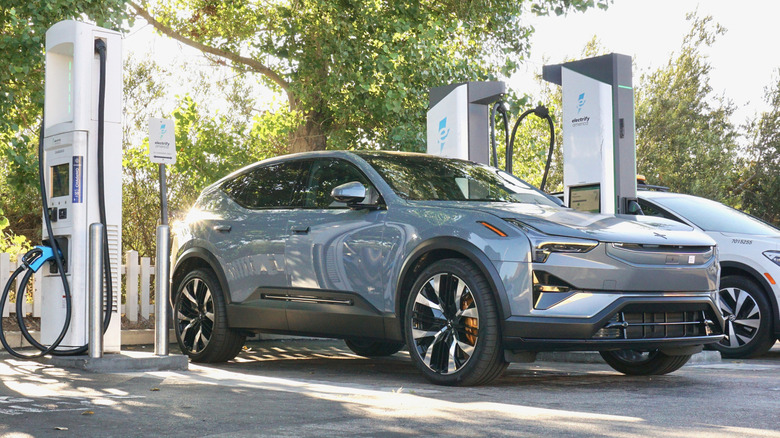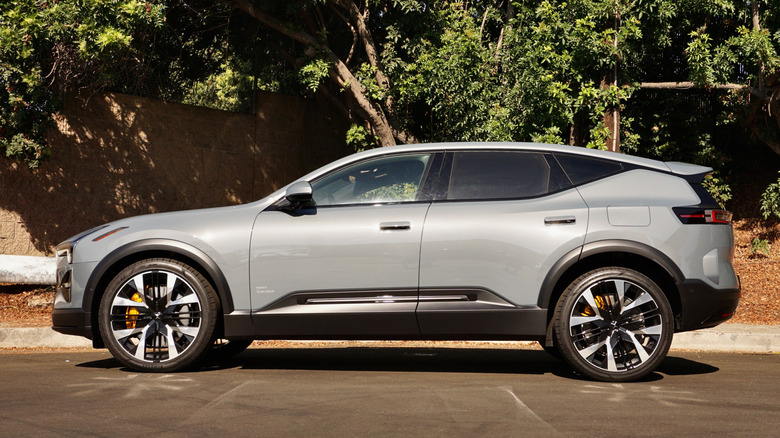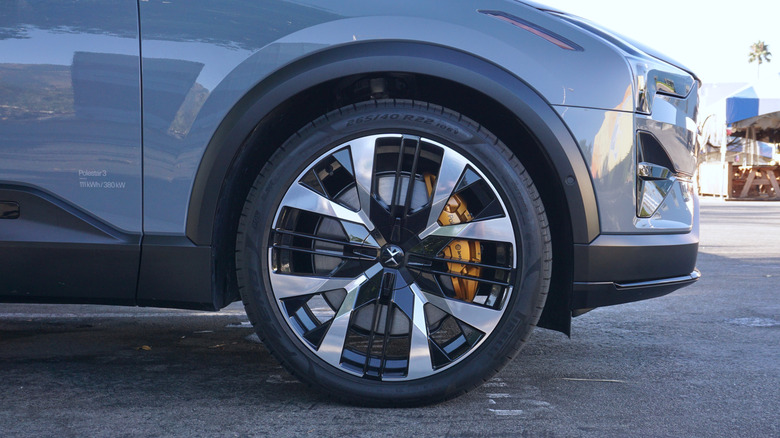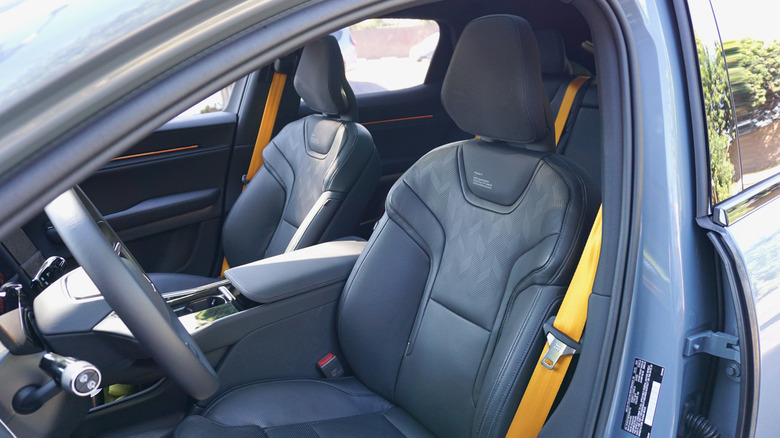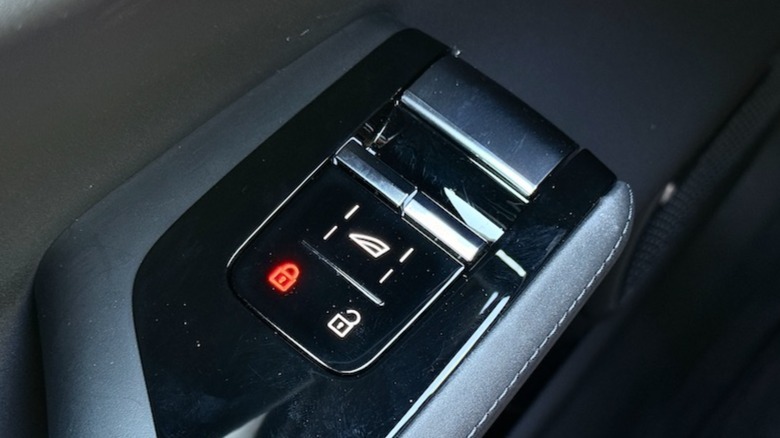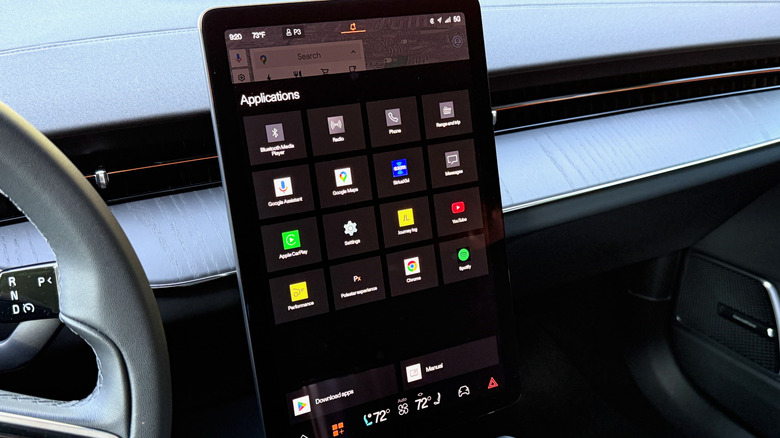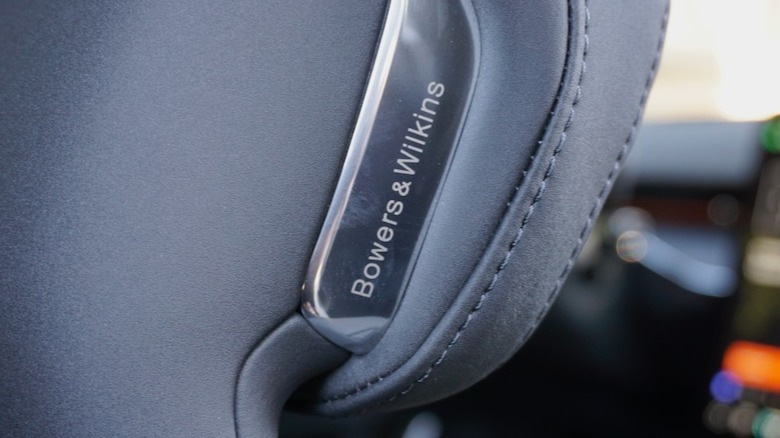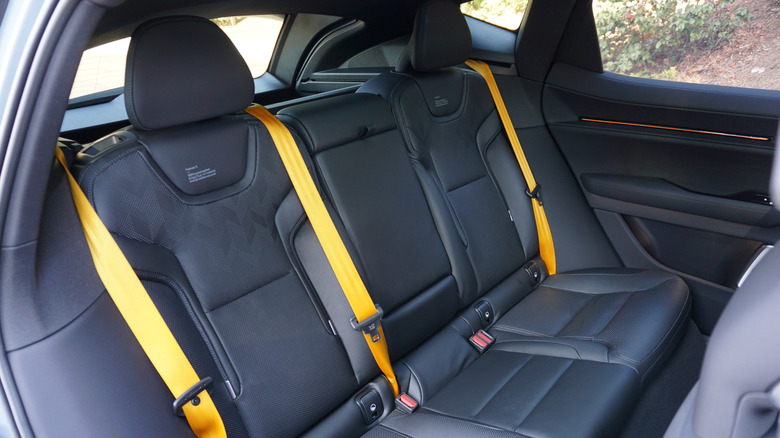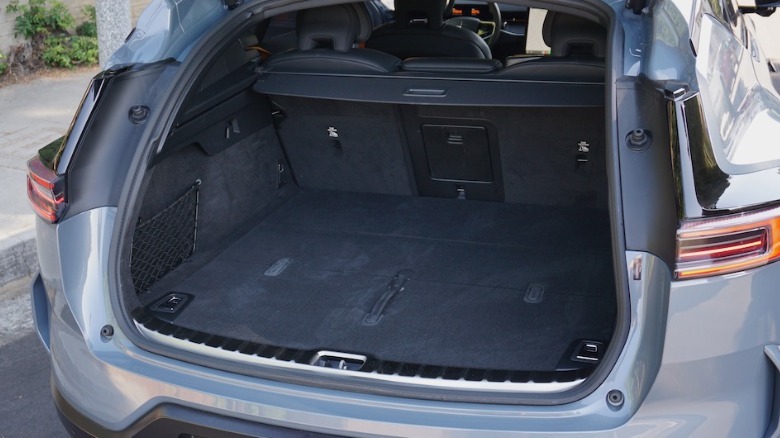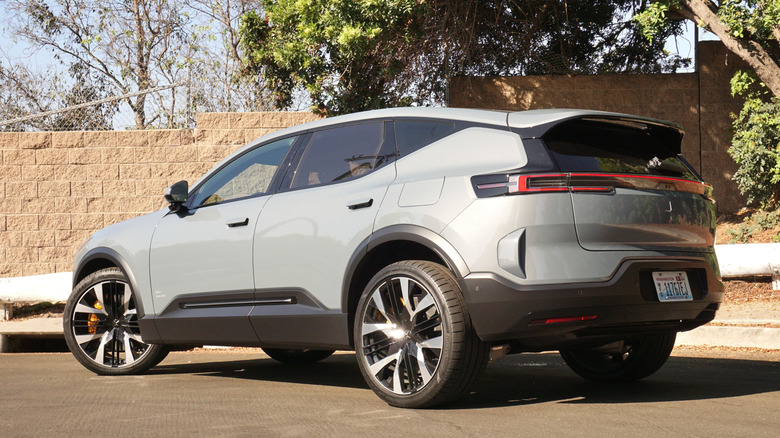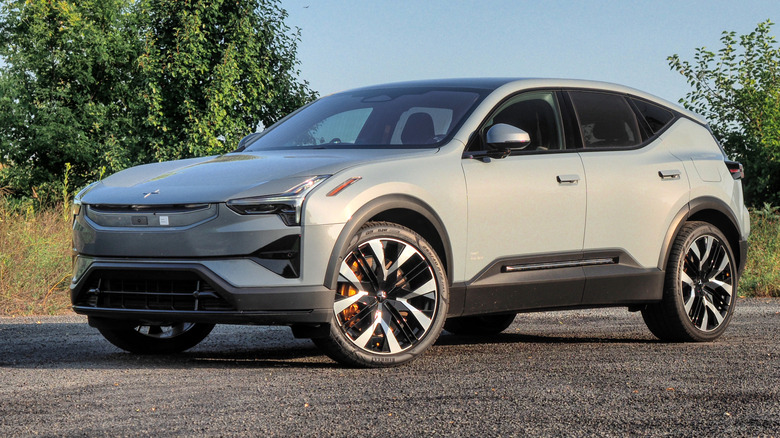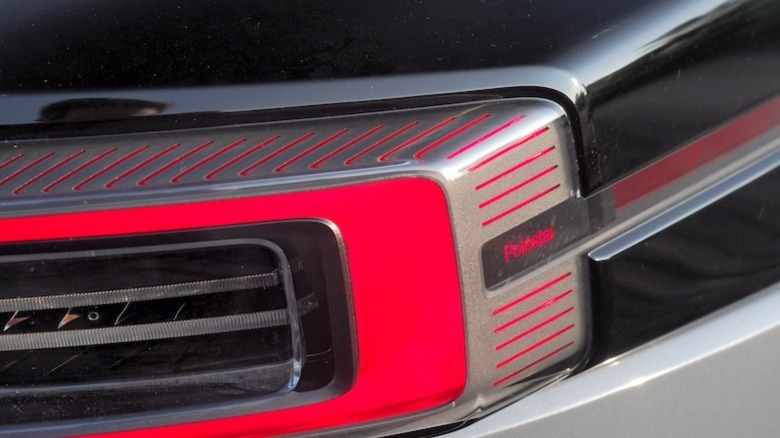The Polestar 3 Is Everything Good About EVs (And Everything Frustrating, Too)
What originally started as a motorsports collaboration between a racing team and a relatively conventional automaker has recently spawned a fully-fledged EV automaker of its own. Polestar, an automaker you may not have heard of just yet, is the one-time Swedish racing team turned automaker in question. Originally called Flash Engineering , they began working with Volvo back in the 1990s. Along the way, Volvo acquired Polestar and eventually that led us here: to the all-electric company known as Polestar and their first SUV, the Polestar 3.
Volvo no longer fully owns Polestar, but the two brands are still linked, so stepping inside the Polestar 3 you might recognize some buttons or design elements from the latest Volvo products. The Polestar 3 isn't just a gussied up Volvo, though, it's a proper luxury SUV. Refined, well-built, equipped with all the plush trimmings you'd expect from a premium brand, and available with some serious performance bonafides, the 3 is a real-deal rival for more well-established luxury brands.
Power is impressive across the board
With the company's roots in racing, it should be no surprise that the Polestar 3 has its performance bases covered. Every trim comes standard with a 111 kWh battery pack. At the base trim level, there's a single-motor setup with 299 horsepower and 361 lb-ft of torque. The Long range Dual motor is next up in the pecking order, the Polestar 3 puts out 489 hp and 620 lb-ft. The car Polestar dropped off at my front door however, was at the top of the lineup – the Long range Dual Motor with Performance Pack. It pushes power levels on the 3 up to 517 hp and 671 lb-ft.
According to Polestar, that's sufficient to launch the 3 from zero to 60 mph in 4.5 seconds, which is pretty impressive considering its weight. Big battery packs are downright heavy: depending on options, the Polestar 3 with dual motors weighs somewhere between 5,686 and 5,791 lbs, but with nearly 700 lb-ft of torque on tap the horizon arrives in a short-lived blur and in a largely silent, drama-free ceremony. Launching the Polestar 3 is much like it is in other powerful EVs. Put your head firmly on the headrest, bury the right pedal to the mat, and hold on for dear life. It's quiet, thrilling, and easily repeatable, just like we've come to expect from high-powered luxury EVs.
Not light, but light on its feet
Like a seasoned heavyweight boxer who knows how to get out of the way of an incoming punch, the Polestar 3 is powerful, but also quick to change direction. The steering, while not particularly engaging or connected, is well weighted in both the standard and firm modes, and appropriately easy to control on the highway in the light mode. On tight canyon roads the Polestar 3 is nimble, agile even, which is shocking when you consider its nearly three-ton heft.
Going through higher speed corners, the 3 feels planted and stable, even if its weight does naturally pull it out of line a bit. Contributing factors to the stability include the overall width and the sticky Pirelli P Zero tires. Not including the mirrors, the Polestar 3 measures 77.4 inches wide. That's only about 3 inches shy of the width of a Chevy Tahoe (81 inches). You definitely feel the 3's size in tight parking lots, needing to pay extra attention as you maneuver through crowded spaces.
Ride quality is good but there are a few small sacrifices
The dual motor version of the 3 uses active air suspension with multiple settings for ride and suspension height, lowering that vehicle at speed to optimize aero. This gives it the ability to deftly dart back and forth between corner apexes, but it only comes with a small ride-quality penalty. Thanks to its sporty intentions, the Polestar 3 has a relatively firm ride, but it's not very bouncy over big cracks or unexpected potholes. The seats are well-padded and well-bolstered too, which helps absorb some road imperfections along the way.
At a stand-still, the interior feels isolated and extremely quiet. And if I were able to somehow mute the lower half of the vehicle, it would be nearly as quiet on the highway with very little wind noise making its way into the cabin. The road noise, however, via the P Zero's on the big 22-inch wheels, is pretty substantial. At highway speeds there's a decidedly non-luxury hum from beneath the Polestar 3, but that's the price you pay for such a sporting SUV. If you want grip, it'll come with a little bit of rubber gripe.
Charging, range and energy consumption
There's a lot of battery to charge up, here, like having a pickup truck with a massive fuel tank. On base models, range is estimated at 350 miles, while dual motor trims drop to 315 miles, and the Performance pack cuts the EPA estimate to just 279 miles of range. According to Polestar, the 3 will charge on a 250 kW DC fast charger from 10% to 80% in about 30 minutes.
That depends on the charger, mind, and when I stopped at a 350 kW charger, the 3 only added about 90 miles of range in 30 minutes. Some of that can be attributed to the specific charger, and the maximum rate I saw was about 120kW. Otherwise, charging at home overnight should be relatively easy as Polestar claims a zero to 100% charge via AC will take 11 hours.
It's also worth noting that the dual motor performance pack version of the Polestar 3 isn't very efficient. The base single-motor model consumes energy at a rate of 35 kWh per 100 miles. The long range dual motor takes that up to 38 kWh/100mi, and the Performance pack shoots up to 44 kWh/100mi. That's the same energy consumption rating as some versions of the big Rivian R1S and R1T. And during testing, the Polestar's indicated range drops by 5 or 10 miles at a time, giving me a bit of range anxiety as I drove.
Interior has some big issues, maybe dealbreakers
It's not often that I'm befuddled by a new car's interior. I've been testing and reviewing cars for over a decade and normally, after a few minutes in the driver's seat, I'm able to figure out where most of the important controls are. Things like mirror adjustments, climate control buttons, and stereo controls are all right at the top of that list. With the Polestar 3, after a week behind the wheel, I was still accidentally pressing the wrong buttons or searching for ones I'd used earlier.
Why was I unable to locate things? Well, for starters, none of the buttons on the steering wheel are labeled. There are some outlines of where buttons generally exist, but there's no font or symbols to direct you to the right ones. Oftentimes, the buttons aren't associated with a task you're trying to complete, so it's a lot of trial and error.
Then, there's the windows. If you, the driver, want to roll down all four windows, you need to roll down the front two windows first, then hit a selection button, changing to operation of the rear window switches on the door panel. To say that another way: there are only two window switches. You have to toggle between them if you want to roll down all four windows. It's a clumsy and inelegant way to get rid of two buttons that nobody was looking to get rid of.
More than just some missing buttons
During my week with the Polestar 3, the hard-to-understand buttons and poorly-designed window switches weren't my only frustrations. There were a lot of drop outs in my Apple CarPlay connection. More than once, I had to disconnect and reconnect my phone to get things going, and I had to select my phone each time I got into the car rather than the connection just booting up from the word go. The keycard used to gain access to the car often wasn't recognized too, at least until I pulled it out of my pocket and placed it on the wireless charging pad of the center console. It seemed a bit like an uphill battle at times.
One big redeeming factor was the stereo. As standard you get a respectable 300-watt 10-speaker system, but the test car here came with a serious upgrade: an optional 1,610-watt Bowers & Wilkins stereo with 25 speakers, including some embedded in the headrests. It had near-perfect sound quality, volume that was way more than sufficient, and clarity across the volume range. Whoever built this part of the 3 is clearly a big music fan.
Great build quality and spacious interior
Even though I'm confused by the decisions made regarding the layout and lack of labeling inside the Polestar 3, I'm still a big fan of the materials they used to put it all together, and how well-assembled it is. Almost all the panels and interior surfaces feel like they're made from extremely high-quality materials. The massive 14.5-inch touchscreen on the center console and the 9-inch driver display both have high resolution and high-quality graphics – they truly feel like upscale pieces of hardware.
The price on the Polestar 3 is high (more on that in a bit) but the price feels relatively justified, even at a stand-still. The overall exterior styling and its flourishes are excellent too. The exterior has lots of little design features that look sleek and aerodynamic, but its not gaudy or overstyled, contributing to the refined but modern look of the 3.
Up front, there's plenty of room for adults of all shapes and sizes, and in the rear there's lots of space too. The wide exterior dimensions I mentioned earlier mean there's lots of hip room and shoulder room in the back. The front storage compartment (also known as a frunk) has a small amount of storage with just 1.1 cubic feet, but the trunk offers 21.1 cubic feet with the rear seats in place. It should be plenty spacious for a few small suitcases. Center console and door storage are adequate too.
2025 Polestar 3 verdict
The Polestar 3 is stylish, modern, and thoroughly enjoyable to drive. Comfortable seating, a spacious cabin, and high-quality materials all make it feel truly luxurious. But the frustrating user interface is a big distraction and, at this price point, that's a huge hurdle to clear. With the dual motors, the extra Performance Pack, and some other significant options packages, the Polestar 3 that I tested started out with an MSRP of $93,100 (including $1,400 destination fee). The metallic paint was a $1,300 option and the Nappa Leather paired with the ventilated front seats was a whopping $5,500 option. To bring the price down a bit, I'd happily swap to the standard dual motor version and save several thousand, while gaining a bit of overall range in the process.
The competition is also pretty stiff when it comes to EV SUVs. Sure, the all-electric landscape is shifting all around us with the elimination of EV tax credits, but there are still some appealing options out there. Vehicles like the Macan Electric still top my list for the class and if you want to save a bit of money, you can also take a closer look at the Ford Mustang Mach-E. It's not quite as luxurious or spacious as the Polestar, but the Ford has serious performance for the money.
The Second Opinion
As occasionally happens, I coincidentally had a Polestar 3 at almost exactly the same time as Travis. Like him, I enjoyed the EV's speed and refinement — mine was a Long Range Dual Motor Performance, too, but with the $5,500 Nappa leather option that includes ventilation and massage for the front seats; I wish you could get the cooling on its own — and found the promised range to be achievable if not segment-leading. It's fast, comfortable (with the understanding that sportier EVs are even stiffer than usual), and I think it looks fantastic, inside and out.
It's also maddening. I very nearly reported the unmarked steering wheel buttons to Polestar, assuming they were meant to light up. When you get past that, you realize how limited their functionality is: there's no volume or track skip control, for instance. Even getting inside was a headache, the buttonless key fob (on what was effectively a brand new car) going unrecognized, and the backup NFC card demanding a frustratingly-precise swipe against just the right spot on the driver's pop-out door handle (and even then only working half the time).
Then there was the disconcerting grinding noise apparently from the rear motor, loudly complaining during the first half-mile of each drive, and the Polestar randomly going into "tortoise" mode with reduced power on multiple occasions. Oh, and periodically shifting, unprompted, into park while I was waiting at traffic lights. Gremlins in just this one car, or another example — as on the Volvo EX90 — of early software not behaving as it should? It'd be enough to make me sit things out until the 2026 model year, at least, to get past the teething pains.
- Chris Davies
